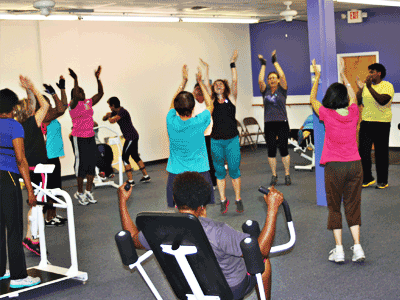Introduction to Cardio Workouts and Endurance
Cardio workouts, also known as cardiovascular exercises, are activities that raise your heart rate and enhance the efficiency of your cardiovascular system. Essential for building endurance, these exercises play a pivotal role in boosting overall physical fitness. The primary aim of cardio workouts is to improve the heart’s capacity to pump blood more effectively, which in turn, enhances stamina and reduces fatigue during both everyday activities and athletic pursuits.
Building endurance through consistent cardio exercises has numerous benefits. It significantly improves heart health, reducing the risk of heart disease by lowering blood pressure and cholesterol levels. Additionally, improved stamina from regular cardio workouts translates to increased energy levels, making daily tasks more manageable and less exhausting. For athletes and sports enthusiasts, robust endurance is paramount to achieving optimal performance, as it allows for better sustaining of physical activities over extended periods.
Moreover, cardiovascular exercises contribute to better mental health by releasing endorphins, often referred to as 'feel-good' hormones, which help in reducing stress, anxiety, and depression. They also aid in weight management by burning calories and boosting metabolism, further contributing to overall physical well-being.
The purpose of this blog post is to present the top 5 cardio workout routines that can help significantly improve endurance. By incorporating these routines into your fitness regimen, you will be able to enhance your cardiovascular fitness, leading to better heart health, increased stamina, and improved overall physical performance. These workouts are designed to be versatile, catering to different fitness levels and preferences, ensuring that everyone can find a routine that suits their needs.
Routine 1: Interval Training
Interval training is an exercise approach characterized by alternating periods of high-intensity activity and low-intensity recovery. This method not only boosts endurance but also maximizes calorie burn, making it a staple for those looking to improve their cardiovascular fitness efficiently.
During an interval training session, you might engage in intense activities such as sprinting, which elevate your heart rate significantly. This is followed by a recovery period where the intensity is significantly reduced, allowing your heart rate to lower. For example, a common interval training session could involve sprinting for 30 seconds, then walking for 90 seconds, and repeating this cycle for a set duration, typically 20 to 30 minutes.
One of the primary benefits of interval training is its impact on aerobic capacity. By frequently challenging the cardiovascular system through high-intensity bursts, the body becomes more efficient at using oxygen. This leads to improvements in overall endurance and stamina. Moreover, the alternating periods of high and low intensity make the workout sessions time-efficient, which is ideal for individuals with busy schedules.
However, it's important to note that interval training can be intense, especially for beginners. Those new to this form of exercise should start with shorter high-intensity periods and longer recovery phases to gradually acclimate their bodies. It's also advisable to warm up properly before starting the workout and to cool down afterward to prevent injuries. Over time, as endurance improves, the duration of high-intensity bursts can be increased, and recovery periods shortened to keep challenging the body.
Given its efficiency and effectiveness, interval training is an excellent choice for anyone looking to enhance their cardiovascular health, burn calories, and boost endurance. By alternating between intense and recovery intervals, you can achieve significant fitness gains in a relatively short period.
Routine 2: Long Steady-State Cardio
Long steady-state cardio involves performing a continuous, moderate-intensity exercise for an extended duration, typically ranging from 45 to 60 minutes. Activities such as jogging, cycling, or swimming are commonly undertaken at a consistent pace, ensuring the heart rate remains elevated but stable throughout the workout. This type of cardio routine is particularly effective for enhancing cardiovascular endurance, as it trains the heart to pump blood more efficiently over prolonged periods. For instance, a sample workout might involve a 5-mile run at a steady, manageable pace.
One of the foremost benefits of long steady-state cardio is improved fat metabolism. During these extended workout sessions, the body gradually shifts from relying on glycogen stores to utilizing fat as a primary fuel source, leading to enhanced fat-burning capabilities over time. Additionally, this routine helps build muscle endurance, as muscles learn to sustain performance under continuous stress, subsequently reducing fatigue in long-duration activities.
Variations of long steady-state cardio can be implemented to maintain interest and prevent plateaus. For example, individuals can alternate between different activities such as cycling on some days and swimming on others, or they can incorporate varying terrains and resistances, like running on trails or biking on hilly routes. Another effective strategy is to gradually increase the duration and intensity of the workouts. Starting with a 45-minute session and slowly extending it to 60 minutes, or incrementally increasing the distance covered, can provide progressive overload to continuously challenge the cardiovascular system.
Overall, long steady-state cardio is a cornerstone routine for those looking to build endurance and stamina. When correctly integrated into a balanced fitness program, it provides a reliable pathway to achieving long-term cardiovascular health and metabolic efficiency.
Routine 3: Circuit Training with Cardio
Circuit training is a dynamic workout approach that combines strength training and cardiovascular exercises in a structured sequence, allowing participants to target multiple fitness components simultaneously. This method involves performing several exercises in a row, with minimal rest in between, to maintain an elevated heart rate and enhance both muscular and aerobic endurance.
A typical circuit training session consists of a series of strength exercises interspersed with cardio activities such as jumping jacks, burpees, or jump rope. A sample circuit workout might include:
- Push-Ups (1 minute)
- Jumping Jacks (1 minute)
- Squats (1 minute)
- Burpees (1 minute)
- Lunges (1 minute)
- Jump Rope (1 minute)
Participants would repeat the entire circuit 2-3 times with minimal rest between exercises to maintain a high-intensity workout and improve endurance.
One of the key advantages of circuit training with cardio is its capability to deliver a full-body workout in a relatively short amount of time. By incorporating various strength exercises along with cardio activities, this routine ensures an efficient and comprehensive fitness regimen that engages different muscle groups. Moreover, the variety of exercises helps keep participants engaged and motivated, reducing the monotony often associated with repetitive workout routines.
To maximize cardiovascular benefits, it is important to structure the circuit by alternating between upper and lower body exercises and including high-intensity cardio bursts. This not only prevents muscle fatigue but also allows for a continuous high heart rate throughout the session. Incorporating exercises that challenge different aspects of fitness ensures a balanced workout that efficiently boosts overall endurance.
Whether you are a novice or a seasoned athlete, circuit training with cardio provides a versatile and effective way to enhance both muscular strength and cardiovascular endurance, making it a valuable addition to any fitness regime.
Routine 4: Hill or Stair Climbing
Hill or stair climbing is a highly effective cardio workout that serves as an excellent means to enhance both lower body strength and cardiovascular endurance. This routine involves moving against gravity, and can be performed by running or walking up hills, or utilizing a stair machine at the gym. Whether you choose natural inclines or gym equipment, the core principles remain the same: increase your heart rate and build muscle in your legs.
The primary benefits of hill or stair climbing are multifaceted. Firstly, it significantly increases your heart rate, thereby improving overall cardiovascular health. This increased heart rate helps to boost endurance, making you more resilient to physical exertion over time. Secondly, it focuses on strengthening the muscles in your lower body, including your quadriceps, hamstrings, glutes, and calves. This comprehensive lower body workout aids in muscle development and toning, contributing to better overall athletic performance.
For optimal results and to prevent injury, maintaining proper form and technique is crucial. When climbing hills or stairs, ensure you maintain a steady pace that you can sustain throughout the workout. Keep your back straight and engage your core to provide stability. Avoid leaning too far forward, which can cause strain on your back. Focus on taking smaller, controlled steps rather than large, quick strides to better manage your energy and reduce the risk of tripping or overexertion.
As with any fitness routine, it's important to introduce variations and progressions to keep challenging your body. One way to progress with hill or stair climbing is by gradually increasing the incline or duration of your workout. Start with shorter sessions at lower inclines, and as you build strength and stamina, aim for steeper hills or longer durations. Additionally, you can incorporate interval training by alternating between periods of intense climbing and slower, recovery-paced climbing.
Incorporating hill or stair climbing into your cardio routine offers a robust workout that yields significant benefits for both endurance and muscle strength. With proper technique and a structured approach to progression, you can effectively enhance your cardiovascular fitness and lower body strength.
Routine 5: Aerobic Dance or Group Classes
Aerobic dance or group fitness classes, such as Zumba, step aerobics, or dance-based workouts, offer a dynamic and enjoyable way to improve cardiovascular endurance. These sessions blend rhythmic movements with vigorous cardio exercises, thereby enhancing cardiovascular health while keeping participants engaged and entertained. One of the key benefits of group fitness classes is the improvement in coordination, which is achieved through the various dance steps and movements. Moreover, the collective energy and motivation from working out in a group setting can propel individuals to push through their limits and achieve their fitness goals.
Zumba, a popular aerobic dance class, combines Latin-inspired dance moves with high-energy music, making it an excellent choice for those looking to have fun while getting fit. Step aerobics, on the other hand, involves stepping up and down on a platform in sync with music, providing an effective cardiovascular workout that also tones the lower body. Other dance-based workouts can include styles such as hip-hop, ballet-inspired barre classes, and even traditional dance forms. The variety ensures there's something to suit everyone’s interest and fitness level.
Participating in these classes often leads to improved cardiovascular health due to the sustained activity that keeps the heart rate elevated. Additionally, the social aspect plays a significant role; it increases motivation and adds a layer of accountability, as participants are less likely to skip sessions when they have committed to a group. It is crucial, however, to find a class that aligns with one's fitness level and preferences. Beginners might start with low-impact classes and gradually progress to more intense sessions as their fitness improves.
To maximize the benefits of aerobic dance or group classes, individuals should wear appropriate attire, stay hydrated, and follow the instructor’s guidance. Maintaining consistency, setting personal goals, and embracing the supportive group environment can lead to a more enjoyable and effective workout experience.
Conclusion and Tips for Success
In summary, incorporating a variety of cardio workout routines is essential for boosting endurance and maintaining overall fitness. The top five cardio exercises—running, cycling, swimming, high-intensity interval training (HIIT), and rowing—each offer distinct benefits that can enhance different aspects of cardiovascular health and stamina. By weaving these exercises into their workout routines, individuals can prevent the onset of boredom and avoid hitting fitness plateaus.
However, the key to successful endurance training lies not just in the variety of exercises but also in setting realistic and achievable goals. Establishing clear, incremental objectives can provide a roadmap for progress and keep motivation high. Consistency is another cornerstone of building endurance. Regularly engaging in cardio activities ensures that the body adapts and strengthens over time, resulting in substantial improvements in cardiovascular health.
Listening to one’s body cannot be overstated when pursuing any fitness regimen. Pushing too hard can lead to injury, which could derail progress. Therefore, it is crucial to give the body adequate rest and recovery, and to pay attention to any signs of overtraining such as persistent fatigue or discomfort. Consulting a fitness professional can offer valuable insights tailored to individual needs, helping to maximize the effectiveness of cardio workouts and minimizing risks.
Gradually incorporating these top cardio routines into daily or weekly workouts can yield significant endurance gains. Each session brings one step closer to better health and a higher level of fitness. Remember to keep challenging the body by progressively intensifying the workouts, whether it's by increasing the duration, pace, or intensity.
Finally, maintaining a positive mindset and continually pushing the limits of one’s endurance can lead to remarkable improvements in overall health and fitness. Embrace the journey and celebrate the milestones, no matter how small they may seem. Stay committed, stay consistent, and enjoy the lifelong benefits of enhanced cardiovascular endurance.













